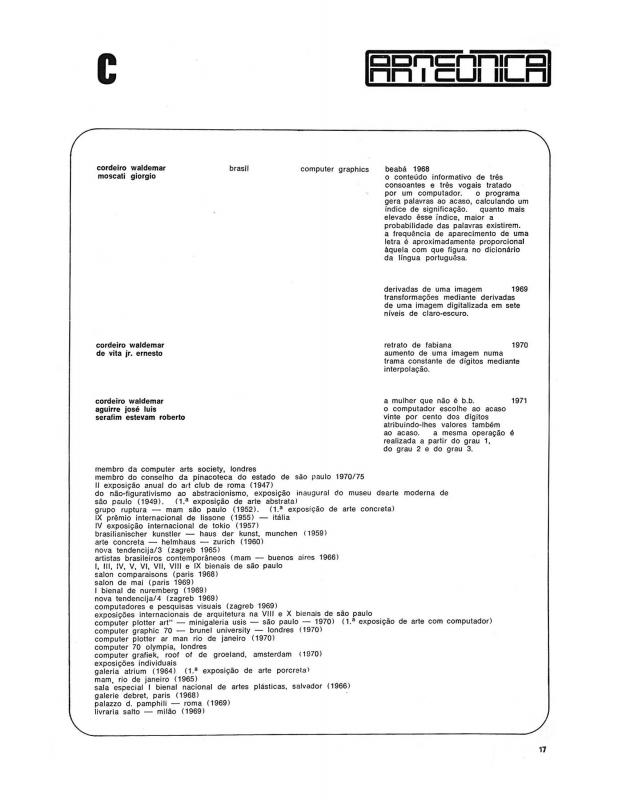The study proposals assembled by [Maria] Lucia Santaella are topics she revisits at further length in later works. That is the case with her book, Imagem. Cognição, Semiótica, Mídia (São Paulo: Iluminuras, 1998), written jointly with the German researcher Winfried Nöth. It is also true for another book written around the same time, organized by Etienne Samain under the title O Fotográfico. With further regard to this, see “A imagem pré-fotográfica, fotográfica, pós-fotográfica” [doc. no. 1110929]. Santaella is undoubtedly one of the most distinguished researchers working in the field of semiotics in Brazil. Her theories have been widely disseminated among scholars interested in studying the image and theories of representation.
The writer, who is a professor at Pontifícia Universidade Católica de São Paulo (PUC-SP), is one of the main theoreticians of technological art and has authored about ten books in this field. Here Santaella makes use of the semiotics concepts established by Charles Sanders Peirce (1839−1914) in The Collected Papers (vols. 1−8). She calls upon these concepts to analyze the processes of creation and perception of the artwork that arise out of new technological media.
José Wagner Garcia, architect and multimedia artist from São Paulo, has been developing projects focused on the link between art and science. After studying under a scholarship at Massachusetts Institute of Technology (MIT) from 1988 to 1991, he became one of Latin America’s pioneers in the use of cutting-edge technology for artistic purposes. Among other ideas, he proposed the project Sky Art, sponsored by the Museu de Arte Contemporânea da Universidade de São Paulo (MAC-USP, 1986). This project consisted of placing huge geometric figures that were visible from outer space in wide-open spaces so they could be photographed from satellites orbiting in the stratosphere.
Two decades earlier (1969−73), the Concrete painter Waldemar Cordeiro began his investigation into the use of the computer and plotter for artistic purposes. See “‘Computer plotter art’ ? Primeira mostra na América Latina,” held at the Galeria USIS at the Consulate General of the United States in São Paulo [doc. no. 1110487], and his proposal for technological or electronic art that he condensed to the simple “Arteônica” [doc. no. 1110836].



